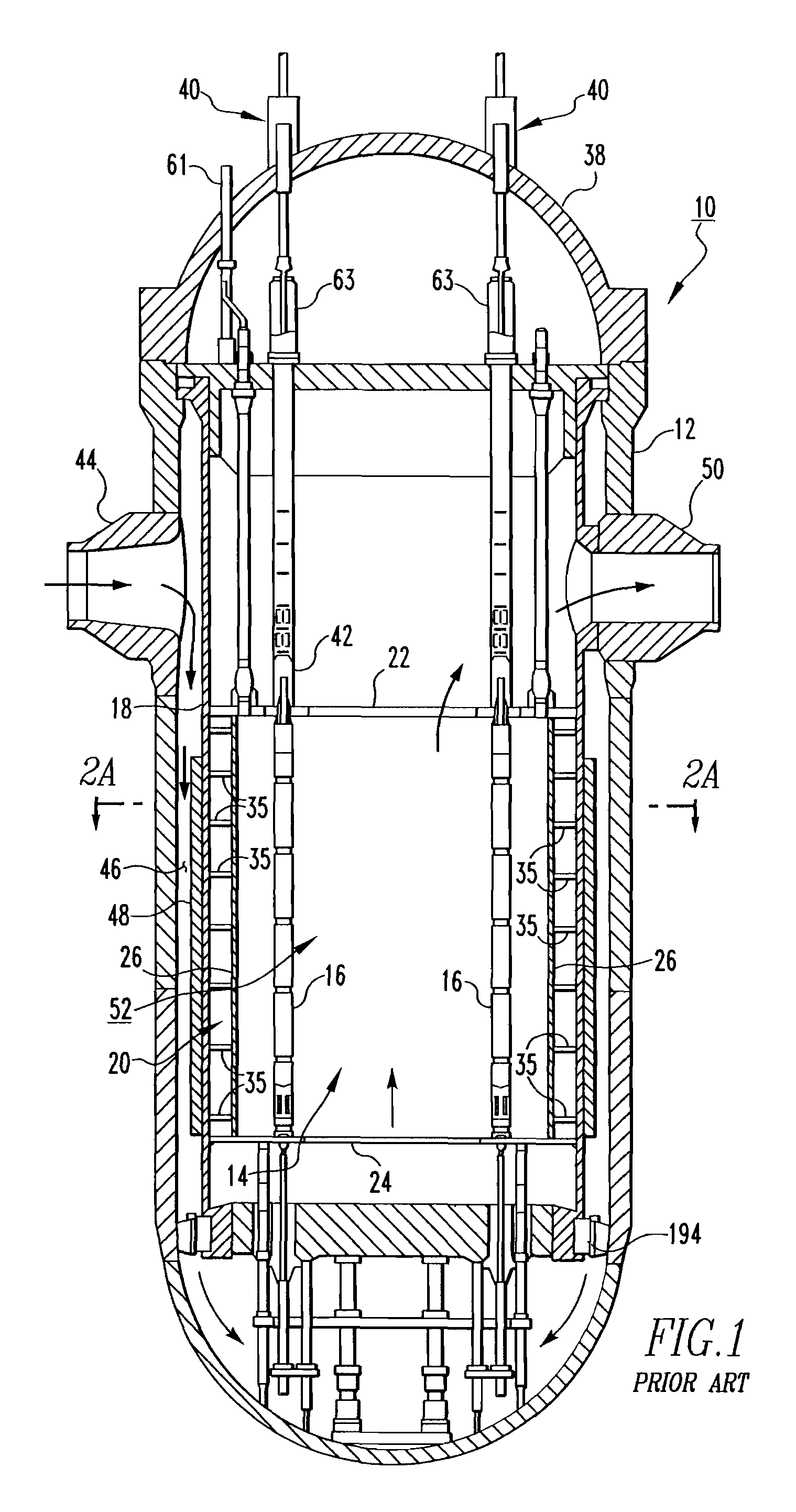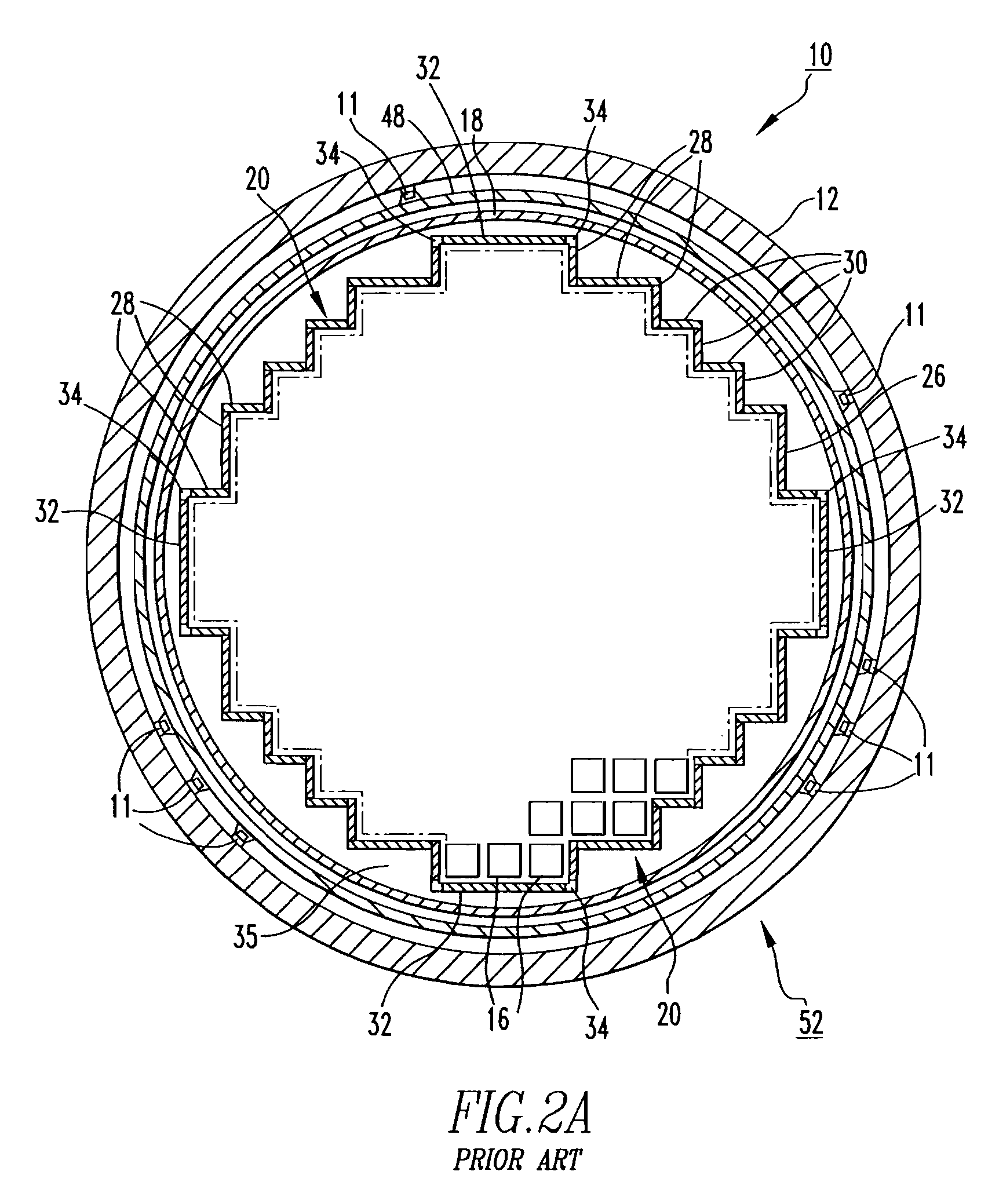Method and tooling for dismantling, casking and removal of nuclear reactor core structures
a technology for dismantling, casking and removing nuclear reactor core structures, applied in the field of nuclear reactors, can solve the problems of large cost, large cask thickness, and prior proposals that do not meet these criteria, and achieve the effects of reducing the contact level, increasing the thickness of the cask, and reducing the radiation level of non-activated elements
- Summary
- Abstract
- Description
- Claims
- Application Information
AI Technical Summary
Benefits of technology
Problems solved by technology
Method used
Image
Examples
example method
[0077]A non-limiting EXAMPLE of an operation employing the method of the invention will now be discussed. Specifically, FIG. 9A shows the lower internals 52 residing in its storage stand 8 after the core barrel 18 has been removed from the pressure vessel 12. A number of head and vessel alignment pins 193 are provided at the mating surface. At an elevation of about 290 inches above the reactor cavity floor 3, the core barrel 18 is parted using a plasma torch 140 (shown in simplified form) mounted, for example, on a track assembly 142 such as, for example and without limitation, a BUGO TRACK®, which is affixed by clamps or suction cups to either the core barrel 18 or thermal shield outer diameter. A BUGO TRACK® is commercially available from BUG-O Systems, Inc. which has a place of business in Pittsburg, Pa. The torch 140 will track around the circumference of the core barrel 18 (a distance of about 430 inches), thereby severing the upper section 60. Depending on each specific plant ...
PUM
 Login to View More
Login to View More Abstract
Description
Claims
Application Information
 Login to View More
Login to View More - R&D
- Intellectual Property
- Life Sciences
- Materials
- Tech Scout
- Unparalleled Data Quality
- Higher Quality Content
- 60% Fewer Hallucinations
Browse by: Latest US Patents, China's latest patents, Technical Efficacy Thesaurus, Application Domain, Technology Topic, Popular Technical Reports.
© 2025 PatSnap. All rights reserved.Legal|Privacy policy|Modern Slavery Act Transparency Statement|Sitemap|About US| Contact US: help@patsnap.com



